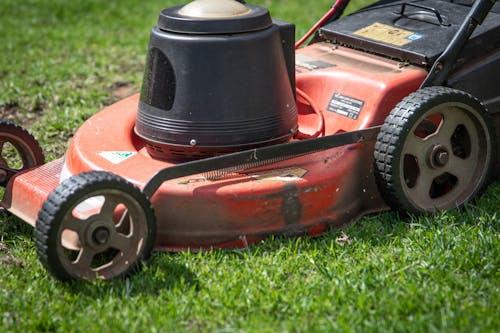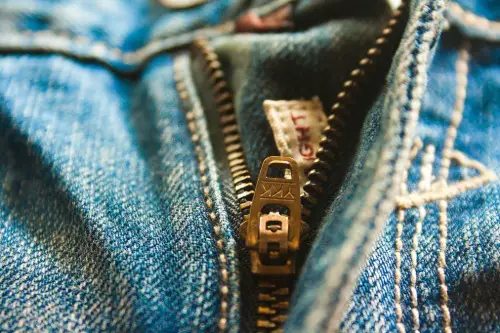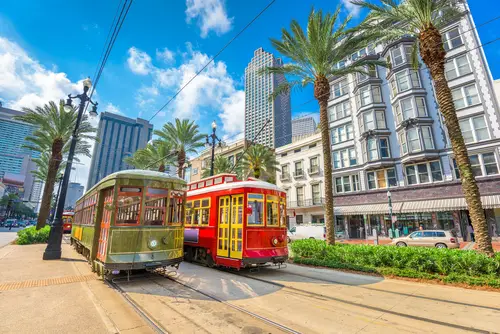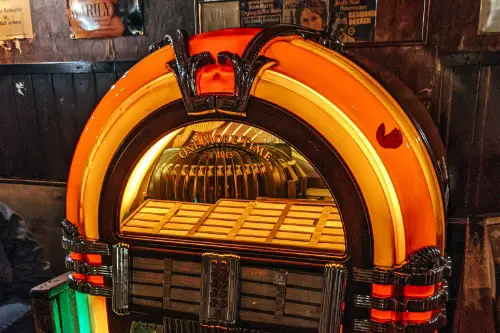1. The Electric Ice Cream Freezer

Before modern refrigerators became common, keeping ice cream cold was a real challenge. The electric ice cream freezer, invented in the early 20th century, allowed households to make frozen treats at home without relying on block ice. It was a small appliance that quietly revolutionized dessert culture. Families could suddenly experiment with flavors without fear of melting chaos.
Despite its impact, most people today have never heard of it. Ice cream remained popular, but the freezer itself faded into obscurity once fridges became widespread. It represents one of those inventions that subtly shaped daily life without leaving a name behind. Yet, without it, homemade ice cream might have taken decades longer to become a staple.
2. The Gasoline-Powered Lawn Mower

Before gas-powered mowers, mowing a lawn was labor-intensive, often requiring scythes or horse-drawn reel mowers. The introduction of a compact, gasoline-fueled mower in the early 1900s made suburban landscaping feasible for the average homeowner. Suddenly, neatly trimmed lawns weren’t just for the wealthy. It also fueled the growth of lawn care as a hobby and industry.
Despite how common it became, the original inventors are largely forgotten. Everyone knows the mower exists, but few recall it was a specific breakthrough in making lawns manageable. It quietly shaped the iconic American suburban aesthetic. Without it, the tidy, green lawns we take for granted might look very different today.
3. The Disposable Syringe

The disposable syringe emerged in the mid-20th century and dramatically improved medical safety. By reducing the risk of cross-contamination, it helped curb the spread of diseases in hospitals and clinics. It also made vaccinations faster and more practical, saving countless lives. Yet it’s rarely celebrated outside medical circles.
Its influence is enormous but understated. People often assume syringes are inherently single-use, forgetting this was a major innovation. Public health owes a huge debt to a tool most of us consider mundane. It’s a quiet invention that literally keeps us alive.
4. The Roll Film Camera

George Eastman’s roll film camera transformed photography from a hobby for the rich into something accessible for everyone. Before it, cameras required bulky glass plates and complex setups. Roll film simplified the process, allowing snapshots of everyday life. It democratized visual storytelling in a way that’s hard to overstate.
Yet the original cameras and their impact are mostly footnotes in history books. People remember smartphones for photos but rarely the gadget that made casual photography possible. Roll film cameras paved the way for visual culture as we know it. Without them, Instagram might never exist.
5. The Zipper

The modern zipper, popularized in the early 20th century, replaced buttons and hooks with a quick, reliable fastening system. It transformed clothing and luggage, offering convenience and durability. From jackets to boots to suitcases, the zipper quietly reshaped the way Americans dressed and traveled. It became an essential part of daily life without fanfare.
Despite its ubiquity, the zipper rarely gets credit as an invention that changed life. We click and pull without a thought to the ingenuity behind it. It simplified chores and even influenced fashion trends. In essence, it’s one of those unheralded tools everyone depends on.
6. The Electric Streetcar

Before cars dominated the streets, electric streetcars made urban commuting practical. Introduced in the late 19th century, they connected neighborhoods, enabled commuting, and reshaped city growth. Streetcars also supported the rise of suburban living by giving people a reliable way to reach downtown jobs. Without them, cities might have grown far more congested or chaotic.
Today, we think of subways or buses, not streetcars, yet the impact remains. They set the template for modern public transit. American cities owe much of their early 20th-century expansion to these electric vehicles. They were a stepping stone to the mobility we take for granted.
7. The Paper Bag Machine

The paper bag machine, developed in the 1850s, mechanized bag production and made shopping far easier. Before that, people carried goods by hand or in reusable containers. Paper bags enabled grocery stores and other retailers to scale up their businesses efficiently. It was a small change that quietly facilitated the rise of consumer culture.
Despite this, few remember it as a transformative invention. We see paper bags everywhere but rarely consider how production innovation mattered. It made packaged goods portable and convenient. This is one of those tools that reshaped daily routines without ever grabbing headlines.
8. The Safety Elevator

Elisha Otis’s safety elevator, patented in the 1850s, made vertical buildings safe for public use. It prevented catastrophic free-falls by automatically locking if the hoist cable failed. This innovation unlocked the skyscraper boom, changing city skylines and urban density forever. It transformed the way Americans live and work without most realizing it.
Modern elevators are taken for granted, yet we owe their safety and reliability to this early design. Without it, cities would be limited in height. Office towers, apartment complexes, and malls might look entirely different today. The safety elevator quietly elevated society—literally.
9. The Electric Traffic Light

Introduced in the 1910s, the electric traffic light standardized urban traffic control. It made intersections safer, reduced accidents, and improved the flow of vehicles. By replacing human police signals and hand gestures, it brought predictability to growing cities. It also enabled automobiles to become the dominant mode of transport.
Few people associate this invention with its early creator. We just expect lights to work, never considering how revolutionary they were. They shaped driving behavior, city planning, and even road design. The humble traffic light is an unsung hero of modern life.
10. The Mechanical Adding Machine

Before calculators and computers, businesses relied on mechanical adding machines to crunch numbers. Invented in the late 19th century, these devices sped up accounting, payroll, and finance. They reduced errors and increased productivity in offices across the country. For a time, they were the backbone of commerce.
Yet their role in modern financial systems is largely forgotten. People see digital tools but rarely recall their mechanical ancestors. These machines made bookkeeping practical at scale. Without them, early 20th-century businesses would have struggled to grow efficiently.
11. The Jukebox

The jukebox brought music into public spaces in a way that home radios could not. Popularized in the 1930s, it allowed anyone to choose a song, democratizing music consumption. Soda fountains, diners, and bars suddenly became social hubs around soundtracks of popular hits. It shaped American culture and the music industry alike.
Though iconic in some retro imagery, its invention is often overlooked. People remember the music but not the machine that played it on demand. It introduced the concept of user-selected entertainment before personal devices existed. The jukebox quietly influenced how Americans experienced music.
12. The Automatic Coffee Percolator

Before automatic drip machines, the percolator allowed people to brew coffee consistently at home. Popular in the early 20th century, it transformed morning routines and workplace culture. Families and offices could enjoy stronger, more predictable coffee without guesswork. It became an indispensable part of daily life, even if it’s mostly forgotten today.
The percolator’s legacy lives on in every cup we sip, yet it rarely receives recognition. It was an early step toward convenience and standardization in beverage preparation. People now take coffee for granted, but the percolator made reliable home brewing possible. Its impact on American mornings is subtle but profound.
This post 12 Forgotten Inventions That Changed American Life—but Not Enough to Remember was first published on American Charm.


